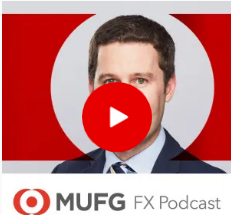To read a full report, please download PDF from the link above
BoJ unwinds NIRP in first step towards bringing back positive interest rates
BoJ winds down NIRP and YCC after concluding that achievement of 2% price target is "in sight".
JGB purchases will continue, but future purchases will be determined "while taking account of factors such as market developments and supply and demand conditions for JGBs".
With end to QQE, Bank returns to conventional monetary policy framework of guiding short-term interest rates.
US Fixed Income: Steeper curve solves all for all
Macro View: As we mentioned in our previous US macro update, we caution investors (and policymakers) should not read too much into 1-months data (especially at the start of the year). For example, the strong January NFP report was revised down from 353k to a more realistic, but still solid 229k level (also spot on with the 230k average monthly job growth for the past year). There was also a revision to December’s data.
With fears of inflation still front and center, it was the large spike in CPI and PCE, both on the core and supercore readings, that caught most off guard in January. The February data, although still sticky high on a historical basis, the CPI update did show some improvement. The missing piece in the inflation story is why has shelter costs taken so long to decline when real-time measures of housing related inflation, in particular rents, have seen significant declines in the marketplace. Well, at least in February, owners equivalent rent finally declined to 0.4 vs 0.6 in January.
On the consumption side retail sales continues to show that the US consumer, in aggregate, is slowing down its spending activity. And on a real (inflation adjusted basis) the annual growth in retail sales is bordering on some of the slowest activity in nearly multiple decades. This is at odds with the narrative that the consumption side of the economy remains strong. Instead, there is growing evidence that the US consumer is getting tapped out and most of the spending is coming from corporates and/or the government as a result of the various spending programs in place.
Net, the US economy (and data news) is likely still benefitting from the fiscal impulse of 2023 as well as the start of the year seasonal effects. As we look forward spending will be linked to how robust is job growth and the propensity for the US consumer to take on more debt if wages lag (due to a weakening of the quality of jobs created – i.e. more low paying jobs).
Fed and US Rates Views: Overall, the March FOMC event came in largely as we expected (leaning neutral-to-dovish). The 2024 dots were unchanged (suggesting 3 cuts – which was also what we were forecasting) and the bar to cut rates further than what is in their forecast was lowered. Chair Powell continues to shift focus towards the labor market as the rationale to cut further if conditions weaken versus looking for reasons not to cut (which is very telling that they must be concerns about the growth outlook since inflation is nowhere near their inflation target yet). Although we did not get the official QT-tapering announcement, given Powell’s presser comments, it seems like an announcement will come “fairly soon”.
In our view, QT-taper likely launches at the May FOMC meeting. As a result, if QT needs to be adjusted first before commencing with the normalization process in rates, we now expect the first cut to start either in June or July, where we still see 125 or more in total basis point cuts in 2024 (especially if they were forced to resort to 50bp cuts later in the year). Since we are pushing back the 1st cut a meeting at a time, now its June in our view, we do not have a drastic change to the rates profile out the curve.
FX Outlook
The US dollar has strengthened against most G10 currencies since our last release of the Global Markets Monthly (21st Feb) although the gains have been marginal against some of the core G10 currencies like EUR. On a DXY basis, a range of 102.00-105.00 has been in place so far this year and the dollar has now moved closer to the upside limit. We still believe it more likely that the dollar remains in this range over the coming months as we see no reason to fuel any strong divergence trade. The forward rates market implies a very synchronised easing policy will commence around mid-year. The pricing for the Fed, ECB, BoE, BoC, and SNB is very similar with about 20bps of cuts in June and the cumulative total of rate cuts in 2024 amongst those five central banks also in a narrow range of between 75bps and 95bps. The Fed is at the high end now for rate cuts which we would concur with following last week’s dovish FOMC press conference by Fed Chair Powell. Still, the difference is marginal and with growth globally still fragile and uncertain, especially in China, the scope for US dollar selling on a more active Fed is constrained to a degree.
KEY RISK FACTORS IN THE MONTH AHEAD
- The main upside risk for USD/JPY would be that this latest phase of stronger US inflation turns into something a little more persistent and lifts US yields further. The markets take out of market pricing more of the rate cuts currently priced and results in the 2yr UST note yield moving back above the 5.0% level for the first time since November last year. Added to this risk-scenario, the MoF and BoJ decide not to intervene as expected given the US yield move and this prompts a bigger move to the upside than generally expected with a potential for a test and even breach of 155.00. It’s a key risk although we see the risk as quite small.
- The main upside risks for EUR/USD are: i) if the US economy and/or labour weakens sharply bringing forward Fed rate cut expectations and encouraging a weaker USD, and ii) if the euro-zone economy picks up more strongly than expected in upcoming quarters as the headwind from higher inflation fades. On the other hand, the main downside risk for EUR/USD would be if US inflation continues to prove stronger than expected in the 1H of this year, it could encourage the Fed to delay rate cuts until later this year.
- The PBOC’s stance on renminbi policy matters greatly. Should the PBOC set the daily benchmark fixing of USD/CNY higher, USD/CNY then likely tests higher levels, due to market participants’ interpretation of the PBOC giving up holding CNY at strong level. On the other hand, there is potential upside for the currency as well, if recent relatively better second-hand property sales can help stimulate the sentiment on first hand property sales.
European Credit
CORPORATE CREDIT RISK PREMIUMS FADE AS THE RALLY MARCHES ON
Despite rate cut expectations being pushed back significantly from where they were when we approached 2024, market exuberance across many asset classes, anchored by soft landing expectations, has remained a prevalent theme. This has been further supported in credit markets by strong technicals fuelled by a wall of cash, as corporate bondholders have effectively accepted the most marginal compensation for default risk since the global financial crisis, as the economic outlook has modestly brightened.
While this looks unsustainable over a prolonged period of time, as uncertainty and associated volatility for credit markets may be reasonably expected at some point over the coming quarters given the sensitive interaction between inflation, rates and growth which have yet to fully play out at this key point in the economic cycle, it is nevertheless hard to fight the current constructive tide of sentiment, supported as it is by positive technicals. Such positive sentiment has been further emboldened by the recent surprise SNB rate cut, as well as dovish comments from Fed Chair Jerome Powell, in what is of course an election year in the US, and his counterparts at the Bank of England and the European Central Bank, which left investors with reason to once again position for easing, with rate cuts from June broadly expected.



